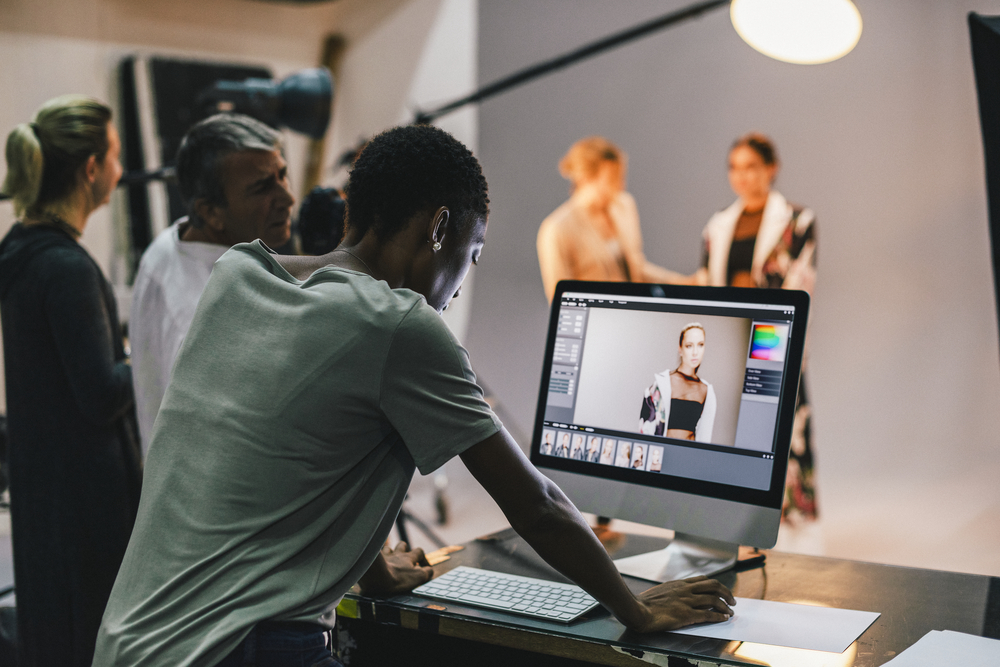Photoshop vs Lightroom: The Debate on Post-production
Adobe creative software is used by those in the creative industry the world over and is some of the most-used software around today. It’s estimated that around 90% of all creatives work on Photoshop and many of these graphic designers, photographers and editors use a variety of Adobe tools to create stunning visual art.
For those just getting started in the photography industry, it can feel like there are many barriers preventing access to Adobe software, including the steep learning curve of mastering Photoshop or the price of each tool on Adobe’s new subscription-only access plans.
Budding photographers may wonder whether Photoshop is really worth it or whether the less powerful, cheaper option of Lightroom is just as good in the beginning. When planning your perfect editing process, it’s important to consider every option. A key part of that is understanding the strengths and limitations of the software you’re about to purchase. Photoshop and Lightroom both have their benefits for photo editors but to get the best out of the tools, you need to know both their strengths and weaknesses.
Why use Photoshop?
Photoshop is widely recognized as one of the most powerful image editing tools available. Although there are many useful alternatives, Photoshop is pretty much the industry standard. It’s fair to say anybody looking to work professionally as a photographer will need to have some understanding of how to use Photoshop.
Originally created as a simple image editing tool, Photoshop has evolved into a piece of software with applications for designers and image-makers in a number of media. From 3D animation to video editing, Photoshop is able to make incredible edits with its wide range of operations. Photoshop is a pixel-level editor that works in layers, meaning that editors have complete control over every aspect of the image and can make changes to different parts of the image separately to create a more realized concept with each photo.
What are the benefits of using Photoshop
If you’re new to the Adobe suite, some of the best elements of the software that will really benefit your editing abilities include:
- Powerful editing
Photoshop is designed purely for image editing so this is where it excels. The vast range of tools available when editing is what makes it so useful for people in all industries.
- Compositing
One such editing tool is compositing, where photographers can layer images or sections of images on top of each other to create the effect they’re looking for. This can be useful for replacing heads in group shots or even just one eye on a person’s face.
- Layer editing
Being able to edit the image in layers allows photographers to be more exact with their changes. This also helps reduce the risk of destructive editing as simply removing the last layer can undo the accidental changes.
- Healing tools
Photoshop has four healing tools, each with a different use. Content-Aware Fill allows editors to remove entire objects from the image while the healing brush is perfect for smaller details like skin blemishes.
What are the disadvantages of using Adobe Photoshop
- Works on one image at a time
Being able to edit images to such a high level of detail comes with the downside of only working on one picture at a time. This, coupled with Photoshop’s inability to work with pictures in RAW format can mean that editors may have to use Adobe Bridge, Camera Raw, and Photoshop just to edit one picture.
- Hard to master
With so many tools and different functions, Photoshop can be intimidating when starting out. Beginner photographers may want to consider Photoshop courses to get to grips with the software.
Why use Lightroom?
Lightroom was introduced much later than Photoshop and joined the creative suite as Adobe Photoshop Lightroom in 2006. The inclusion of Photoshop in the name shows that this tool was supposed to be closely related to the original but Lightroom tackled some specific issues that many photographers had previously encountered with Photoshop.
Being a workflow-focused software, Lightroom allows photographers to create databases of their images and automatically uploads data from the camera to help categorize everything with more detail. It has less editing capabilities but is able to work on a group of images at a time, helping to speed up the process for photographers doing batch edits.
Benefits of using Lightroom
- Simplifies editing process
With automatic databases and metadata extracted from the camera on upload, Lightroom is a great way to streamline the editing process. Users can navigate their collections and even flag or star specific images so they’re easier to return to later.
- Works with the RAW format
Most photographers will work in the RAW format so the ability to upload pictures straight from the camera to Lightroom is a highly attractive feature of the software.
- Allows to create presets
Lightroom presets are designed specifically to make the lives of professional photographers easier. By either creating from scratch or downloading presets made by professionals, users can apply presets to a group of images at a time to keep a collective aesthetic.
- Does not destruct the original image
When an image is edited in Lightroom, the software automatically saves the edits to a new file, meaning the original image can never be lost by accident. This is a common issue photographers find with Photoshop which also lends to its difficult reputation.
- Easy to manage
Lightroom has a more limited set of tools compared with Photoshop, allowing beginners to get the hang of it in much less time. However, those with little to no editing experience may still want to think about Lightroom training to get started.
Drawbacks of using Adobe Lightroom
- Less editorial control
As a weaker editing tool, photographers looking to make detailed and controlled edits will find Lightroom disappointing. However, it still has a strong remit of image editing tools which could be just enough for some professional photographers.
- No layer editing
Layer editing is unavailable in Lightroom as its purpose is mostly as a simple photo editing tool. For any more complex edits or to edit specific areas of an image, users will need to use Photoshop as well.
Photoshop vs Lightroom
In reality, there is no winner in the battle between Lightroom and Photoshop. Each tool has its own uses and Adobe has designed them to be used in conjunction with each other, hence the name ‘Photoshop Lightroom’. Adobe even offers both tools to photographers at just under £10 a month, a saving of £10 each month in comparison with Photoshop as a single app.
For any photographers just starting out in their editing careers, using both Lightroom and Photoshop together will allow you to take advantage of the positives of both tools.










